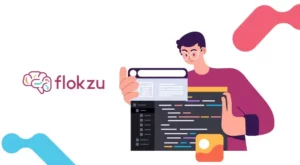When we think of Customer Success, we often think of Customer Service. It is imperative to know the difference between these areas: the first one tries to anticipate potential problems, while the second one tries to fix the problem when it has already happened. There is no doubt that both are very valuable. However, this article will focus on the first one and how automation in customer success can help keep this team proactive.
Why should you invest in customer success? Because customer retention is crucial for any organization’s growth. Therefore, a customer success manager needs to be present in every stage of a customer’s lifecycle, showing the product’s value and ensuring they achieve their goals. From the onboarding process, ensuring they receive appropriate training, to every product update and time passing. The key, with every interaction, is to leave the customer happy. It is not just meeting the customer’s expectations; you need to exceed them. To conclude, it is vital to invest in this area because it plays a role in customer retention, therefore in the organization’s potential to grow.
The place of process automation in customer success
Using a BPM tool to achieve automation in customer success can be very beneficial. How? Customer success managers need to be on every detail and up-to-date about every customer and product update. Being able to automate tasks and processes will allow workers to focus on what matters, as well as reduce the margin of error.
Onboarding: a key process
Hereafter is an example of how this type of process could be modeled with a tool such as Flokzu. According to their needs and objectives, any team member could create this process in a simple and utterly customized way.
When you welcome a new customer, you need to be very quick in showing them how valuable the product they just bought is. Here’s where they are most motivated and excited to use it. The process starts when you register a new customer. Here, you can set an automatic personalized email where you welcome them and invite them to have their first meeting with the customer success manager. Then, you schedule this appointment where you learn a lot about your new customer. You can enter all the new information in your system: country, language, company, amount of employees, etc. All of this data that you save shows the new customer’s potential. You could turn it into valuable metrics and statistics.
During that first meeting, you will establish joint goals and work plans to show how the customer will get the most out of the product or service. From this moment on, the manager becomes a partner in the customers’ success. In the end, the manager assigns the client to an executive. Using a tool like Flokzu, the executive could set automatic reminders with due dates to follow up and ensure that every goal is achieved. Once the onboarding process ends and the client is stable, you could automatically notify the CEO and COO.
Stable customer:
Here, you can choose to automatically send the customer a form to evaluate the NPS (Net Promoter Score), i.e., customer satisfaction, every certain amount of time. You can obtain general statistics from these answers, such as what most of your customers like and what they wish they could change. This information is valuable for the entire organization: it can result in changes in the product, the treatment they receive, the billing process, etc. Moreover, this data allows the constant improvement of your service or product.
On the other hand, with a BPM suite, you could schedule QBR (quarterly business reviews). These would be meetings to update your customer on company news, product updates, and fresh ideas to continue working together.
Moreover, every set amount of time you can automatically send a report to the customer success manager, so that he can supervise the state of each customer.
The customer success team can optimize their time and energy by not doing these tasks manually.
Worst case scenario:
Suppose we see that the client has not been using our service lately. In that case, we can automatically send an alert to the executive, and he can contact them to offer a free session. Of course, we will try our best to prevent our customers from dropping out of the service. However, these things can happen. The most important thing, in these cases, is to know they made that decision. What happened? With Flokzu, you could automatically send them a form asking why they are unsubscribing. By doing this, we could obtain critical metrics. If several customers give the same reasons, you will probably have to make certain decisions and adjustments to change them.
So…why not?
Now that we know all the advantages this tool offers, why not take the plunge? BPM softwares have a lot to offer and can be integrated into many areas of your organization. Manually doing these tasks may not be a problem now, but it probably will be in the long run. Moreover, it makes it difficult for your organization to grow. An easy-to-use BPM software that does not require IT knowledge could be the solution you have been looking for.



























